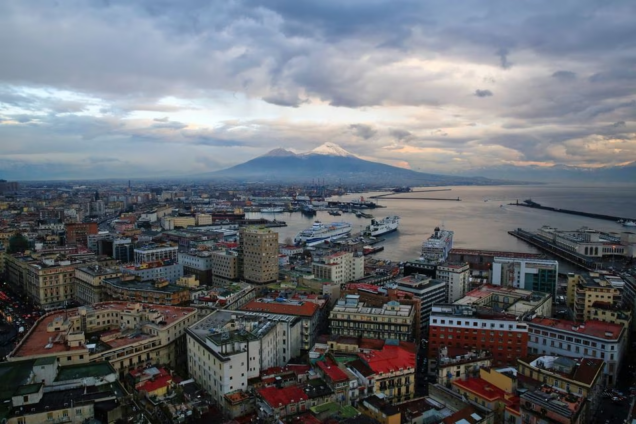A leading volcanologist has warned that mass evacuations might be needed in a town close to Naples, Italy, which sits on a so-called Super Volcano that has been hit by hundreds of small earthquakes in recent weeks.
A 4.2 magnitude earthquake struck the area early on Wednesday, the strongest jolt in 40 years to rattle the volcanic field, known as the Campi Flegrei or Phlegraean Fields from the Greek word for burning.
Campi Flegrei sits across the bay of Naples from Pompeii, where thousands were incinerated by Mount Vesuvius in 79 AD. However, it is a much bigger volcano than Vesuvius and if it ever exploded at full force could kill millions.
Experts say there is no imminent threat of an eruption, but Giuseppe De Natale, the former head of the Vesuvius Observatory at the National Institute for Geophysics and Volcanology (INGV), called for urgent checks on buildings after repeated seismic activity that is pushing up the ground by 1.5 cm (0.59 inches) a month.
Speaking in a personal capacity, De Natale said the last time Campi Flegrei suffered a similar burst of earthquakes in the 1980s, some 40,000 people were temporarily evacuated from nearby Pozzuoli. The town now has a population of more than 80,000.
"Currently, I believe the more immediate risk is seismic. But it is clear that one must also consider the possibility of an eruption," he told Reuters.
He said if there was an eruption, it would be a phreatic, or steam-blast eruption -- which are generally relatively weak and devoid of new magma -- at least initially.
There was no sign of structural damage in the area after Wednesday's tremor.
De Natale confirmed a report in Corriere Della Sera newspaper that he had written to the government last week suggesting possible evacuations. A local official said his recommendation was being reviewed.
The Campi Flegrei are similar to the Yellowstone caldera in the U.S. state of Wyoming but of more concern because they are in an area populated by around 3 million people in the Naples hinterland.
The Campi Flegrei caldera has a diameter of about 12-15 km (7.5-9.3 miles) and last erupted in 1538. One of its biggest eruptions took place some 39,000 years ago and might have led to the extinction of Neanderthal man, researchers say. Magma from that blast has been found in Greenland, some 4,500 km away.
Volcanologists say thousands of small tremors in the area since 2019, which have grown in intensity this year, might be being triggered by tongues of magma pushing up into the subsurface of the volcano at a depth of about 5-6 km.
The INGV says that on average more than 3,000 tons of CO2 are being released each day from the volcanic field. A typical U.S. passenger vehicle emits about 4.6 metric tons of CO2 a year.
Latest Stories
-
Joy FM Prayer Summit for Peace ends in electrifying worship and prayer
6 mins -
The Conscience of Leadership: A call to President Akufo-Addo on Ghana’s environmental devastation
36 mins -
Ghanaian youth unaware of their right to hold politicians accountable – Youth Bridge Foundation
1 hour -
Judge delays Trump sentencing for a third time
2 hours -
2024 WAFCON: Ghana drawn against defending champions South Africa in Group C
2 hours -
Photos from DW-JoyNews street debate on ‘galamsey’
3 hours -
Mimmy Yeboah: Blending heritage with global sophistication, confidence redefined through couture
3 hours -
100 Most Influential People Awards 2024: Brain Hill International School’s Director Mary Anane Awuku honoured
4 hours -
Akufo-Addo commissions 97-km Tema-Mpakadan railway line
4 hours -
Majority requests recall of Parliament
4 hours -
Kanzlsperger and Professor Quartey support WAFA with medical Donation
4 hours -
Gideon Boako donates 10 industrial sewing machines to Yamfo Technical Institute
4 hours -
‘Golden Boy’ Abdul Karim Razak honored at WAFU-B general assembly
5 hours -
Buipewura Jinapor secures Vice Presidential position in National House of Chiefs with record votes
5 hours -
2024 election: I want results to come out like ‘milk and honey’ – Toobu
5 hours

